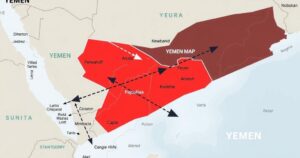Trump Announces U.S. Attack on Three Iranian Nuclear Sites

President Trump announced today that the U.S. has attacked three Iranian nuclear sites, marking a sharp departure from previous diplomatic efforts. This military action elevates tensions between the U.S. and Iran significantly, with warnings from Iranian leadership over potential repercussions. Trump’s address to the nation is expected to shed more light on future actions.
In a bold statement, President Donald Trump announced on Saturday that the United States has conducted an attack on three Iranian nuclear sites located in Fordo, Natanz, and Esfahan. In a social media post, Trump insisted that the operation was a remarkable success, stating, “We have completed our very successful attack on the three Nuclear sites in Iran.” He added that all U.S. aircraft had exited Iranian airspace after dropping a full payload on the Fordow site.
The decision to strike represents a significant escalation, thrusting the U.S. into direct conflict with Iran and complicating its relationship further with Israel, which is actively seeking to weaken Iran’s nuclear capabilities. This shift is particularly noteworthy given Trump’s previous stance; just days prior, he had signaled a preference for diplomatic solutions. On Thursday, he mentioned before the airstrikes that he would assess the situation over the next two weeks to explore negotiation possibilities with Iran.
The striking change in approach might indicate closing options for diplomacy. Iranian leadership, particularly Ayatollah Ali Khamenei, has already warned of the repercussions, asserting that any American military action would be met with devastating consequences. Khamenei recently stated, “If they enter militarily, they will face harm that they cannot recover from,” indicating the serious implications of this conflict escalation.
Interestingly, Trump had responded to the conflict with some level of caution, insisting in earlier remarks that he preferred to avoid military involvement. Despite previous efforts to engage diplomatically, he had also shared that the U.S. maintains a strong distance from being involved in any direct attack on Iran, suggesting, “we can easily get a deal done between Iran and Israel.”
However, as Israeli airstrikes were reported to have severely impacted multiple Iranian military and nuclear targets, Trump’s language took on a far more aggressive tone. Earlier engagements saw him personally threaten Khamenei, calling him an “easy target” and expressing that America’s patience is running thin.
Despite assertions from his own intelligence community, which testified that Iran is not pursuing a nuclear weapon, Trump remained adamant, dismissing the assessments of his director of national intelligence, Tulsi Gabbard, by claiming, “I don’t care what she said. I think they were very close to having one.”
As this dramatic conflict unfolds, the President is scheduled to address the nation at 10 p.m. ET. The implications of these military actions, both regionally and globally, will likely reverberate through diplomatic channels for months to come, as officials and analysts alike assess what this means for future U.S.-Iran relations.
In summary, President Trump has declared a significant escalation in U.S. military involvement in Iran, hitting three key nuclear sites despite having recently suggested a preference for diplomacy. The violent shift has drawn sharp warnings from Iranian leadership about potential consequences. With the President planning to address the nation this evening, the evolving situation may define U.S. foreign policy toward Iran and the Middle East moving forward.
Original Source: www.cnbc.com








